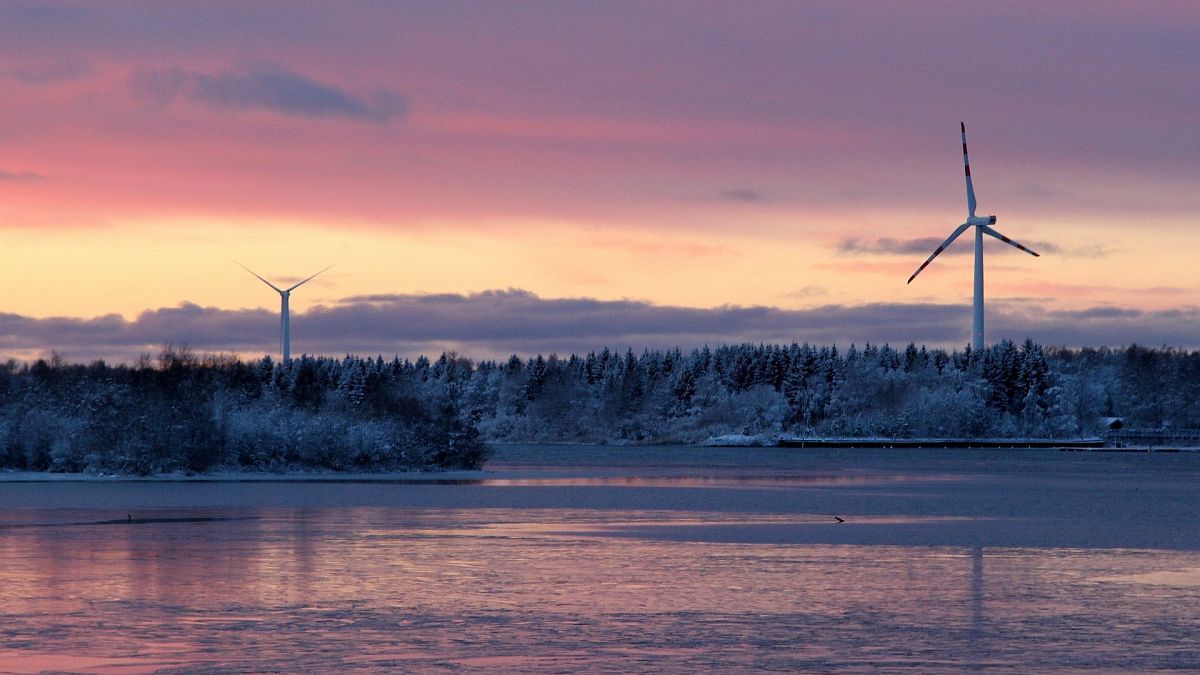Wind power in Finland has more than doubled since 2020 to supply a quarter of the country’s energy.
The closure of a coal power plant in Finland today brings the country to the brink of a full coal phase-out – four years ahead of schedule.
Power utility company Helen officially decommissioned its Salmisaari plant in Helsinki on 1 April, dropping coal to a less than 1 per cent share of the country’s energy mix.
Alongside reducing emissions and increasing energy independence, it says the switch is also helping it to cut customers’ electricity bills.
“We have been able to improve our competitiveness by investing in the flexibility of the energy system in line with our strategy and shifting our production to green solutions,” says Helen’s CEO, Olli Sirkka.
“This way, we can operate more profitably with lower customer prices. Our success is an excellent indication that, at best, the clean transition, cost efficiency and Finland’s security of supply can go hand in hand.”
Wind energy has replaced coal power in Finland
A surge in wind energy and government policy changes have led to a collapse of coal power in Finland in recent years.
Since 2020, wind power capacity has more than doubled to supply a quarter of the country’s energy. Over the same period, coal generation has dropped by 73 per cent from 2.44 terawatt hours to 0.67, now making up less than 1 per cent of the energy mix.
In 2024, Salmisaari and Finland’s other two remaining coal-burning plants – Vaskiluoto 2 and Martinlaakso 2 – contributed just 0.8 per cent of the country’s energy. Vaskiluoto 2 only uses coal for about 30 per cent of its fuel. Martinlaakso 2 is co-fired using coal and biomass and its operator plans to stop burning coal in 2026.
A third, Meri-Pori, remains only in strategic reserve for severe disruption or emergencies until the end of 2026.
How has Finland almost phased out coal?
Finland’s Minister of Climate and the Environment Sari Multala congratulated Helen and all of the country’s energy companies for their “determination” to end the use of coal.
“In 2019, Parliament nearly unanimously passed the law to ban the use of coal for energy within ten years,” Multala said.
“At that time, the target seemed challenging, but now that it has been met ahead of schedule, passing the law appears very far-sighted.”
A comprehensive set of policies was combined with targeted support schemes, including a €22.8 million round of funding in 2021 directed towards innovative energy technologies and investments.
Now, wind power is the “biggest enabler of Finland’s economic growth”, according to a recent report from the Confederation of Finnish Industries. It accounts for €26 billion or 44 per cent of all green industry expected in the country in the near future.
“Imported fossil energy has been replaced with cleaner solutions that reduce climate emissions, while consumers benefit from lower energy prices,” Multala added. As Finland previously relied primarily on coal imported from Russia, the phase-out has also boosted Finland’s energy independence and, therefore, national security.
Campaigners say the law provided a clear signal to utility companies and investors that they needed to carry out the rapid shift.
“Finland has shown what’s possible when clear political signals are matched with rapid investments in renewable power,” says Cyrille Cormier, deputy campaign director at Beyond Fossil Fuels.
“Wind alone has more than covered the gap left by coal and fossil gas, proving that renewable energy can be scaled fast, particularly when government policy created the right conditions.”
Finland needs to double down on scaling renewables, campaigners say
Campaigning from civil society group Coal-Free Finland played a key role in securing the closure of Salmisaari. Executive director Minna Sumelius says their demands and those of the wider environmental community to phase out coal power were once considered impossible.
“However, closing down the Helsinki coal plants will cumulatively reduce Finland’s total emissions by 5 per cent,” she says. “This is a clear demonstration of the transformative power of the climate movement.”
But campaigners say there is still more the country can do, pointing to Finland’s much delayed Olkiluoto 3 nuclear power plant and continued use of biomass.
“Finland is now on the cusp of a fossil-free power system. But the right way to finish the job isn’t with biomass that can pollute as much as coal, nor with delayed, ridiculously expensive nuclear projects,” Cormier says. “It’s by doubling down on rapidly scalable renewables and clean flexibility that maximise their potential.”
Powering past coal
Following the UK’s phase out of coal last year, Finland’s efforts are a continuing transition away from coal power from OECD countries. A total of 14 OECD countries now operate coal-free power systems, with another 13 targeting coal phase out by 2030.
In 2017, the UK and Canada created the Powering Past Coal Alliance (PPCA), a group of countries looking to advance the transition away from unabated coal power generation around the world.
Finland has been a member of the PPCA since its inception, and the alliance has now grown to 180 members – almost one-third of the world’s governments and 84 per cent of the OECD and EU governments.
“Finland’s case confirms that accelerating the shift from coal to clean energy is in countries’ self-interest, as it increases energy security and fuels economic growth,” says Julia Skorupska, head of secretariat for the PPCA.
“It also proves that through bold commitments and proactive planning by governments, coal to clean transitions can happen much faster than anyone thought possible.”
With new national climate targets known as Nationally Determined Contributions (NDCs) expected in 2025, the PPCA says all countries have an opportunity to make commitments to phase out coal power and follow in Finland’s footsteps.
“By committing to No New Coal and coal phase-out in their 2035 NDCs, countries can unlock clean energy investments and thus fuel economic growth, lower electricity prices for consumers, and build resilience and independence, to the benefit of everyone,” Skorupska adds.

